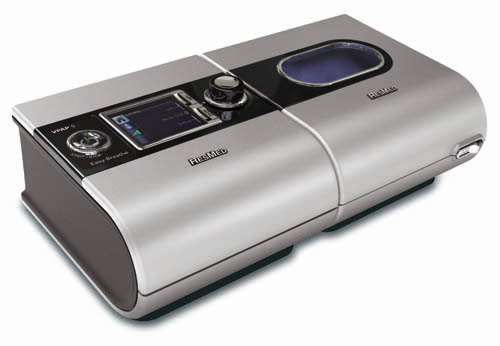
The VPAP™ S is ideal for noncompliant CPAP patients and features Enhanced Easy-Breathe technology for quiet and comfortable therapy.
Features
-
Maximum comfort with Climate Control
The H5i™ heated humidifier offers advanced humidification with Climate Control, which automatically maintains temperature and humidity levels as conditions change throughout the night (and from season to season). Our patented ClimateLine™ tubing delivers a constant, comfortable temperature at the mask and also helps substantially reduce rainout.
-
Ultra quiet therapy with Easy-Breathe motor technology
The Enhanced Easy-Breathe motor significantly reduces radiated and conducted noise transferred through the mask to the patient, making it easier to integrate into the patient’s (and bed partner’s) lifestyle.
-
Data management options
Monitoring patient progress is convenient and easy with a range of data management options, including 30 sessions of detailed data, seven sessions of high resolution data, and 365 sessions of compliance and summary data. Compliance and summary data are easily transferred from the S9™ wireless module for daily remote monitoring and from the SD card on the VPAP S. S9 wireless capabilities allow you to view patient usage during the critical first weeks of therapy, ensuring that any compliance issues are detected and addressed early.
-
Proven technology, effective treatment
Although default settings meet most patient needs, S9 VPAP devices offer advanced technologies with maximum clinical control to help you meet the unique needs of even your most difficult bilevel patients.
The VPAP S features enhanced Vsync™ technology, which compensates for leak by continuously monitoring and automatically adjusting the baseline flow as needed. This enables reliable triggering and cycling while maintaining the set pressures, resulting in excellent patient–ventilator synchrony.
The TiControl™ (Ti Max/Min) feature allows you to set minimum and maximum inspiratory time limits to accommodate individual respiratory conditions. These boundaries are set at either side of the patient’s ideal spontaneous inspiratory time, providing a “controlled period” for the patient to breathe on their own and spontaneously cycle to EPAP.
|